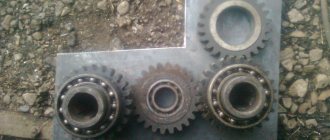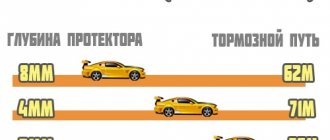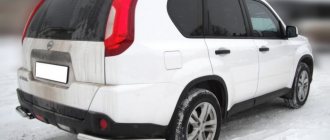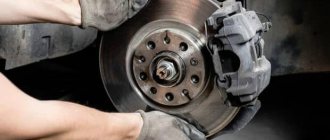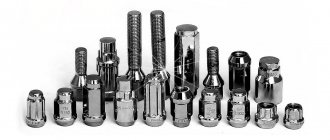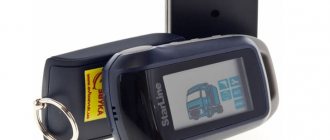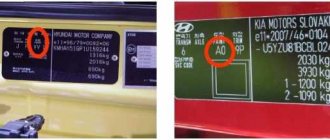Since the Russian Federation is a member of the Geneva Convention, the law on the environmental class of a vehicle is in force on its territory. It regulates the amount of exhaust and its composition. Any excess of it is already considered a violation. This article provides a detailed description of what an environmental standard is and how to understand it correctly.
What does the environmental class of a car show?
Naturally, the environmental class is determined by research. It was clearly shown that an ordinary passenger car consumes about 4 tons of oxygen per year. The following substances are released into the atmosphere:
- CO - about 0.8 tons;
- Hydrocarbons – 0.2 tons;
- Nitrous oxide (nitrous oxide) – 0.04 tons.
Considering that there are more and more cars on the roads, almost exponentially, the amount of emissions is constantly growing. As a side effect, air consumption is also increasing. In a compartment, this could lead to an environmental disaster in the future.
To prevent critical accumulation of carbon monoxide and pollution, this technology is used. Since it is impossible to reduce the number of cars on the roads, it was decided to introduce environmental classes.
To summarize, what an environmental class is is a regulatory document that limits the amount and composition of exhaust.
Is it possible to upgrade or downgrade the environmental class?
It is possible to increase or decrease the environmental friendliness of a car. Let's consider ways to solve this issue:
- Demotion. The operation of the machine is accompanied by the replacement of parts. Spare parts corresponding to class 3, 4 or 5 are expensive. Drivers often refuse them, installing cheap analogues. Re-equipment leads to a decrease in the environmental friendliness of vehicles. In Russia, the moment of downward conversion is not regulated.
- Promotion. Drivers who care about the environment can improve the environmental friendliness of their car when upgrading. To do this, service station specialists suggest installing an electronic system to control the power plant or converting the internal combustion engine in accordance with the standards.
Is it possible that there is a discrepancy between the year of manufacture and the environmental class?
The moment of non-compliance with the environmental friendliness of the year of manufacture is acceptable for special equipment used on construction sites. They have replaced the technical equipment passport (PTS) with the self-propelled mechanism passport (PSM). Environmental safety requirements for this type of transport are lower than for passenger cars.
According to the heads of environmental commissions, equipment traveling at speeds of up to 40 km/h emits less pollutants into the atmosphere.
How many environmental classes are there for a car?
At the moment, the classification has already been revised and corrected several times. The latest, currently valid euro 5, which was preceded by:
- Euro 1. The first standard that came into force in 1992. He imposed minimal restrictions that almost any car could pass. Operated in Russia until 2005. Currently abolished.
- Euro 2. Began to operate almost immediately with the first standard. Air emission standards have been significantly tightened. Similarly, the fuel evaporation masses were cut in half. In the Russian Federation, the protocol was adopted only in 1999. Now it is not valid, since most cars of this class are either scrapped or modernized.
- Euro 3. Was adopted by the EU only in 2004 and was in force in Russia until 2013. The first standard to include diesel engines with restrictions. At the moment, cars with this standard are not produced at any plant in the world.
- Euro 4. Came into force a year after Euro 3. In the Russian Federation it was valid until 2021. Currently abolished. The import of vehicles whose engines meet this standard is prohibited.
Since the new standard was adopted, the import of cars with Euro 1, 2, 3 and 4 classes has become strictly prohibited. It is possible to drive the car more precisely, but the technical passport will not be confirmed. Therefore, it will not be possible to obtain a traffic police registration.
Please note that the standards are internationally valid. You can freely enter any state of the Geneva Convention with the appropriate indication in the vehicle passport.
Within the state, class does not play a big role. Even if you bought a car from an official dealer, made according to the old standard, no sanctions will be imposed. The only thing is that there are areas where it is necessary to comply with the class of trucks and cars.
If you see such signs on the road and your car does not meet the requirements, it is better not to break the rules.
Why is the Euro 5 standard considered the most popular?
Euro 5 appeared as a result of another tightening of exhaust emission requirements. The required level of purity of combustion products can be achieved through the use of engines made according to new standards and purified fuel. In addition to environmental safety, Euro 5 can significantly reduce the load on the fuel supply system and other vehicle systems.
A high level of fuel purification has a positive effect on the operating life of components: injectors, spark plugs and lines. At the same time, the amount of soot in the combustion chamber is reduced. The design of the motor is also undergoing changes:
- Improved calculator calibration.
- Updated oil pump design.
- A pump with an electromagnetic clutch is installed, designed to cool the liquid.
- The crankshaft is equipped with liners with grooves to reduce oil consumption.
- The vacuum pump operates almost silently.
How to find out the environmental class of a car
So, how do you find out what class a car belongs to? There are several ways to deal with this.
Registration certificate
The registration certificate of a new type of vehicle has a corresponding column “Ecological class”. There the classification is indicated in lowercase letters, for example “Fourth”, etc.
The old documentation does not have this information. To avoid problems, it is better to replace it at the nearest traffic police department.
PTS
The passport of a new type of vehicle must indicate the environmental class. You can find it in column 13.
In old-style documents it is rarely indicated, and sometimes it is completely impossible to establish. In this case, the car is automatically assigned zero or first class.
Through Rosstandart
Rosstandart is, in essence, a certification bureau that approves or rejects this or that product. Therefore, when accepting a new car model, they are obliged to lay out its full characteristics, including its environmental class.
On the official website, the data is presented in tabular form. The “Approval Information” contains all the necessary information.
By VIN code
The most effective way to determine the class is to look at the characteristics of the car using the VIN code.
The data is checked on the website of the same Rosstandart, where you need to enter a 17-digit code and receive detailed technical documentation. The WINES themselves can be viewed on the same website, where they are posted in PDF format and sorted by manufacturer.
In some cases, the manufacturer does not indicate the environmental class or it is impossible to recognize it. At the moment the problem is rare, but it still occurs. Then you should contact the nearest traffic police department, where the car will be inspected and assigned an eco-class.
Fuel difference
E-4 diesel fuel must contain less than 50 mg/kg3 of sulfur. The degree of sulfur dioxide content in exhaust gases depends on the volume of sulfur in diesel fuel.
Fuel of standards E-4 and E-5 has a flash point of 550 C. But the CO content differs: in Euro-4 this figure is 1.5 g/kWh, and in Euro-5 it is much less. The mass fraction of polycyclic aromatic hydrocarbons is less than 2%.
Diesel E-5 must contain less than 10 mg/kg3 of sulfur. If this indicator increases in fuel, which is used for internal combustion engines under Euro-5, there is a negative effect on the corrosion resistance of the elements of the power unit, and the service life of injectors, catalyst, bearings and piston rings is reduced.
The cetane number barrier (it directly affects the efficiency of a diesel engine) in E-5 fuel is 51.
Fines in the Russian Federation for violating the standard
At the moment there is no administrative penalty for environmental damage. If you are not going to cross the border, then they cannot punish you in any way. Exceptions are certain “green zones” where the above signs are located.
But even in this case, no monetary penalty is provided. Usually a reprimand and an educational conversation follow.
There are known situations where drivers were issued some kind of collateral fine, but there are no direct sanctions.

